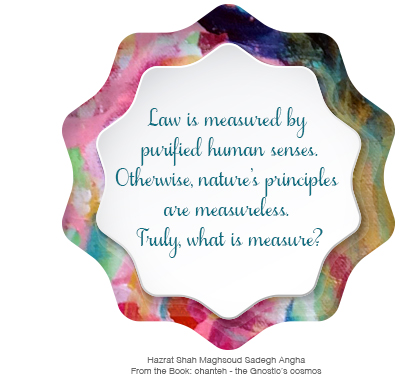Sufism through History (1)
Part I (700- 1200 AD / 1 – 600 AH)
Sufism has a 1400-year history. In the first two centuries immediately following the death of the Prophet Mohammad (pbuh), many Sufis were described as ascetics. Ibrahim Adham (d. 777 AD), a prince, gave up his family and his kingdom to find gnosis. The best known early Sufi saint was a woman, Rabi’a (d. 752AD), who lived and taught the concept of selfless love of God.1
During the European dark ages, Islamic science and literature flourished and Sufi scholars proceeded in scientific and mathematical experimentation and discovery, while Europeans who attempted the same were being tried for heresy. While the richest Christian monasteries then might be endowed with 300 to 400 books, the Muslim University at Granada had 105,000 volumes.
Interaction between Judaic, Christian, and Muslim scholars was widespread, particularly in Spain, where Muslims ruled from 711 to 1492, and allowed freedom of religion even during the Crusades. Sufi teachings were made known throughout the "Western" world through Spain and provided the foundation for the Christian mystics — St. Theresa, St. Catherine, Meiser Eckhart, Richard Rolle and others — who began to appear in the eleventh century.
During this long period, the influence of Sufism spread widely. In the eighth century, the Sufi master Balkhi (d. 789 or 810 AD) was renowned as an expert in the sciences of physics and metaphysics2. The great Sheikh Nakhshabi (d. 859 AD) is described as performing miracles. Several well known Sufis lived during the ninth century—Dhu’n Nun in Egypt, Muhasibi in Iraq, Bayazid Bastami of Persia, famous for poetry and paradox, as well as Karkhi from Baghdad, who taught that one cannot learn love, since it is a divine gift.
Over the centuries, many Sufis were martyred by the more orthodox. Mansur Hallaj (killed 921 AD) became known as the epitome of martyrdom, executed for stating: "I am the Truth." His proclamation of faith is the essence of the teachings of Islam, and to this day it is still misunderstood by Muslim theologians.
Some Sufis were well known in the West. Ibn Rushd (d. 1198 AD), known as Averroes, was a court physician famed as a philosopher. Al-Arabi (1165-1240 AD), a great Sufi mystic that Palacios considers Dante’s Divine Comedy to be based on the descriptions in his works. Al-Arabi, profoundly influenced by two women saints, wrote more than 250 books. Al-Ghazzali (1058-1111 AD) cooperated with the regime in power while Sufis like Ansari were being persecuted, then had a breakdown and left teaching to enter the spiritual life. Ghazzali’s teachings combined mysticism and law, and made him the most influential theologian of medieval Islam, exerting a profound influence on Christian thought.3
In the twelfth century, more than 100 works were produced by Sheikh Ruzbahan (1127-1209 AD)4. Sheikh Najmuddin Kobra (1145-1220 AD) trained seventeen noble disciples. Among them were Ali Lala Ghaznavi, Farid-ud-Din Attar, and Seyfeddin Bakharzi. Molana Jalaleddin Balkhi Rumi was a student of one of his disciples5. He became renowned for his mysticism and ecstatic experiences. Annemarie Schimmel in her book entitled Mystical Dimensions of Islam states: "There is no doubt that Kobra himself experienced these heavenly journeys and traversed the cosmic ranks in his visions. He agrees with other Sufi theoreticians insofar as he sees man as a microcosm, containing everything that exists in the macrocosm."6
